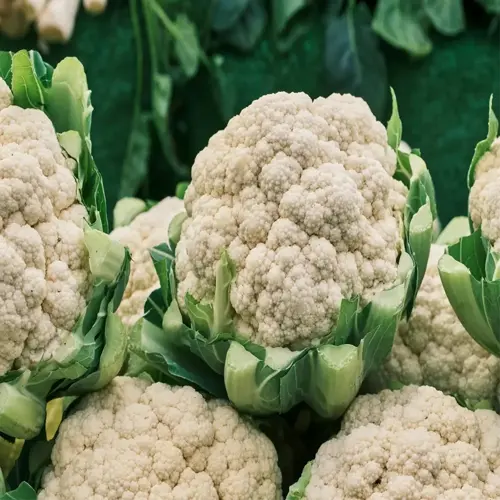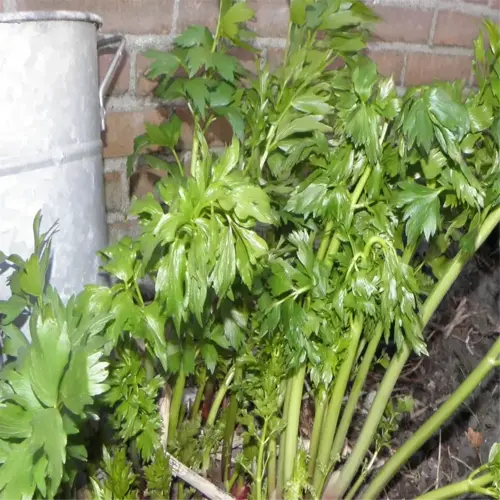How to Grow Carrots: Complete Guide for Beginners

Written by
Michael Sullivan
Reviewed by
Prof. Charles Hartman, Ph.D.Growing carrots requires loose, stone-free soil,,,
Plant carrots 2-3 weeks before the last frost for proper germination
Select short varieties for heavy soil, and long types to go deeper
Water 1-2 inches per week and avoid overhead watering to prevent diseases
Carrots harvested after the first frost will produce sweeter roots; use a garden fork to preserve the crown when harvesting
Store carrots between 32°F and 40°F, and keep them at 90% relative humidity for week-long storage
Article Navigation
When it comes to learning how to grow carrots, it all begins with their unparalleled flavor. Carrots grown in the garden taste so sweet and crunchy that you will never find that flavor in a store-bought carrot. When you bite into one of your homegrown carrots, that delightfully earthy flavor that only comes from the soil you have taken care of will be apparent. You can grow several different colored carrot varieties, including orange, purple, and yellow, that all have unique nutrients as well as beauty.
Carrots flourish throughout USDA zones 3-10, capable of growing in cold spring temperatures or mild winters. I have harvested healthy roots from the rocky soil of New England and sandy beds in Texas. The timing is crucial. Planting too early in cool soil temperatures will rot the seeds. Planting too late in the spring means the heat will inhibit the carrot's growth.
This guide advises about preparing soil, seasonal considerations, and insect control. You will find out how loose soil can prevent stunted roots, along with spotting the early signs of carrot rust fly damage. Your first harvests that are full of vibrant colors will change the way you think about gardening.
Planting Times and Seed Selection
Timing is non-negotiable when it comes to planting carrots. For USDA planting zones 5-8, plant 3 weeks before the last spring frost. For zones 9-10, wait until fall when temperatures stay below 85ºF. I have lost entire crops due to the summer heat when I rushed the calendar.
Short-season varieties like the Paris Market will mature in 50 days and are great for heavy clay soils while the long types such as Imperator will require 80 days and deep, loose soil. Determine what seeds to plant based on regional pests, rust flies are common pests in humid areas and nematodes are included in dry areas.
Make sure to consider colors. Purple Dragon carrots have anthocyanins that lose their color in alkaline soil but grow well in acidic soil. Golden varieties, such as Yellowstone, are more drought tolerant than orange. I usually throw in various carrot seeds together for a mix so everyone can see the unexpected rainbow in my harvest, neighbors and chefs find it just as interesting as I do!
Zones 3-5 (Short Growing Season)
- Spring Planting: Sow 2 weeks after last frost (May-June)
- Fall Planting: Start seeds 10 weeks before first frost (July-August)
- Recommended Varieties: Atlas, Napoli (fast-maturing)
- Soil Prep: Loosen soil to 12" depth (30 cm)
- Germination Temp: 45-85°F (7-29°C)
- Harvest Window: 8-10 weeks post-planting
Zones 6-8 (Moderate Climate)
- Spring Planting: 3 weeks before last frost (March-April)
- Fall Planting: 12 weeks before first frost (August-September)
- Recommended Varieties: Danvers, Yellowstone (heat-tolerant)
- Soil Prep: Amend clay soils with 3" (7.6 cm) compost
- Germination Temp: 50-75°F (10-24°C)
- Harvest Window: 10-12 weeks post-planting
Zones 9-10 (Warm Winters)
- Winter Planting: October-December for cool-season harvest
- Avoid: Summer planting (roots become woody)
- Recommended Varieties: Kuroda, Paris Market
- Soil Prep: Raised beds with 6" (15 cm) sand layer
- Germination Temp: 60-70°F (16-21°C)
- Harvest Window: 9-11 weeks post-planting
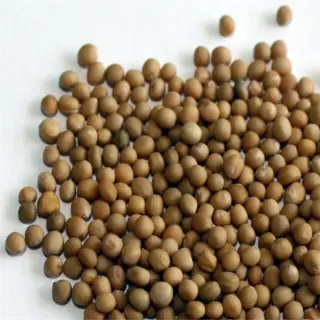
Pelleted Seeds
- Precision Planting: Uniform coating allows exact 1" (2.5 cm) spacing
- Beginner-Friendly: 90% germination rate vs. 70% for raw seeds
- Cost: $3.50-$5 per 500 seeds
- Soil Depth: Requires 8-12" (20-30 cm) loose soil
- Water Needs: Daily misting until germination
- Storage: 2-year viability in cool, dry conditions

Color Varieties
- Purple Carrots: Contain anthocyanins (20% higher antioxidant levels)
- Yellow Varieties: Sweetest option (12% sugar content)
- Storage: Orange types last longest (3-4 months refrigerated)
- Soil pH: 6.0-6.8 for optimal color development
- Harvest Timing: 60-75 days for full pigmentation
- Market Demand: 40% premium price at farmers markets
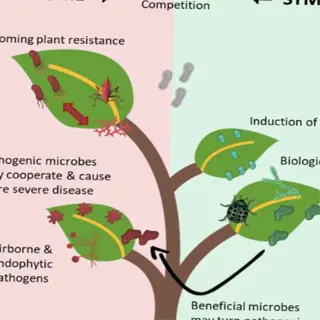
Disease Resistance
- Bolero Hybrid: Resists leaf blight and rust fly larvae
- Treatment: Neem oil sprays at 14-day intervals
- Prevention: Crop rotation every 3 years
- Soil Testing: Check nematode levels pre-planting
- Companion Plants: Leeks reduce rust fly infestation by 60%
- Resistance Lifespan: Effective for 5-7 growing seasons

Organic Options
- Certification: USDA Organic or Non-GMO Project Verified
- Yield: 10-15 lbs (4.5-6.8 kg) per 10-foot row
- Cost: $4-$6 per 1,000 seeds
- Compost Requirements: 2" (5 cm) layer before planting
- Pest Control: Diatomaceous earth applications weekly
- Market Growth: 25% annual increase in organic demand
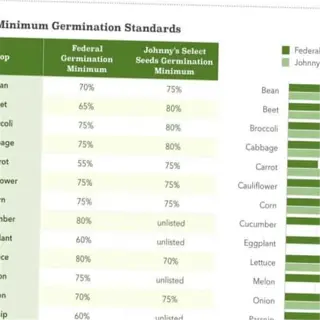
Germination Rates
- Pelleted Seeds: 85-90% success in controlled conditions
- Raw Seeds: 65-75% success with ideal moisture
- Temperature Impact: Drops 50% below 50°F (10°C)
- Light Exposure: Requires full sun for 6+ hours daily
- Seed Age: 1-year-old seeds lose 20% viability
- Pre-Soaking: 12-hour soak improves rates by 15%
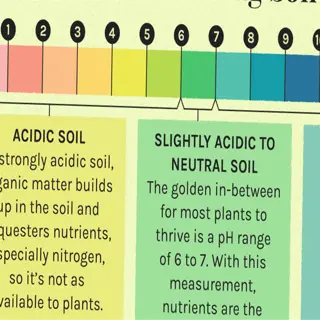
Soil pH Preferences
- Optimal Range: 6.0-6.8 for nutrient uptake
- Acidic Soils: Below 5.5 causes stunted growth
- Amendment: Add lime at 5 lbs (2.3 kg) per 100 sq ft
- Testing Frequency: Every 2-3 growing seasons
- Container Mix: 3:1 potting soil to sand ratio
- Organic Matter: 30% compost improves pH buffer
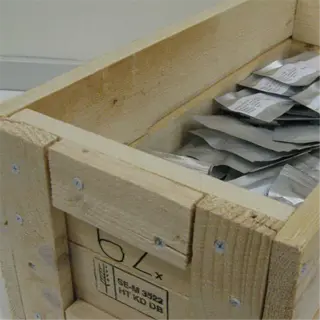
Seed Storage
- Viability: 3 years in airtight containers
- Temperature: 40°F (4°C) ideal for long-term storage
- Humidity Control: Silica gel packs maintain 8% moisture
- Labeling: Date and variety critical for rotation
- Freezing Risk: Avoid temperatures below 32°F (0°C)
- Germination Test: 10-seed paper towel method pre-planting

Companion Planting
- Beneficial Plants: Tomatoes deter carrot flies
- Avoid: Dill attracts harmful swallowtail butterflies
- Spacing: 12" (30 cm) between carrot and onion rows
- Marigolds: Reduce nematodes by 70% in field trials
- Rosemary: Repels aphids when planted upwind
- Yield Boost: 15-20% increase with proper companions

Water Requirements
- Germination Phase: 0.5" (1.3 cm) water daily
- Mature Plants: 1-2" (2.5-5 cm) weekly
- Drip Systems: Reduce fungal disease by 40%
- Mulching: Straw retains moisture in zones 7-10
- Overwatering Risk: Splitting occurs above 2.5" (6.4 cm)
- Rainfall Adjustment: Subtract weekly precipitation from quota
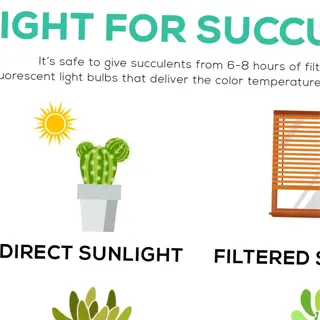
Sunlight Needs
- Minimum: 6 hours direct sun daily
- Partial Shade: Tolerates 4 hours in zones 9-10
- Leaf Growth: 8+ hours needed for full canopy
- Container Tip: Rotate pots for even light exposure
- Winter Planting: South-facing slopes in cold climates
- Yield Impact: 30% reduction below 6-hour threshold
Preparing the Perfect Soil
Sandy soils are exceptionally quick-draining, which dries out the roots. Add 30% compost or aged leaf mold to help retain moisture. Clay soils sometimes suffocate carrots, but you can improve drainage with 20% coarse sand or perlite added to the soil. I learned this after contending with a seasons' worth of cracked and stunted roots in my compacted backyard plot.
To increase your soil's capacity to unlock nutrients, try targeting a pH of 6.0-6.8. You can be surprised what test kits can reveal, for example, my soil had a pH of 5.5 before adding crushed eggshells which in turn kept soil phosphorus levels properly balanced. For alkalinity in dirt, I will take elemental sulfur over peat moss every time since it is more sustainable.
Forget the peat moss. Coconut coir absorbs more water than peat and has no acidity problems, holding 10 times its weight in water. Combine 1 part coir to 3 parts native soil. Include worm castings to add microbial matter. This combination grew my first 12-inch long unbroken Imperator carrots.
Lowering pH (Acidic Soils)
- Elemental Sulfur: Apply 1 lb (0.45 kg) per 100 sq ft to reduce by 0.5 points
- Peat Moss: Mix 2" (5 cm) layer into topsoil (avoid in sustainable gardens)
- Coffee Grounds: 0.5" (1.3 cm) layer monthly during growing season
- Testing Frequency: Every 3 weeks until target pH reached
- Safety: Wear gloves when handling sulfur compounds
- Cost: $12-$18 per 50 lb (22.7 kg) bag
Raising pH (Alkaline Soils)
- Agricultural Lime: 5 lbs (2.3 kg) per 100 sq ft increases pH by 0.5
- Wood Ash: 10-15 lbs (4.5-6.8 kg) per 100 sq ft in winter
- Timing: Apply 3-6 months before planting for full effect
- Watering: Irrigate thoroughly after application
- Caution: Over-liming locks out iron and manganese
- Organic Alternative: Crushed eggshells (slow-release)
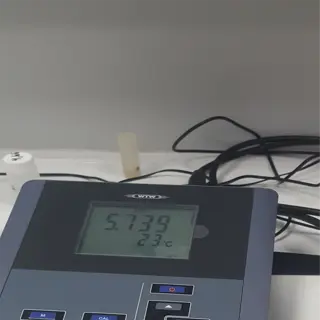
Digital pH Meter
- Accuracy: ±0.2 pH units when calibrated monthly
- Depth: Test at 6" (15 cm) and 12" (30 cm) depths
- Cost: $25-$50 for reliable models
- Maintenance: Clean probe after each use
- Best For: Frequent gardeners with multiple beds
- Calibration Fluid: Replace every 6 months
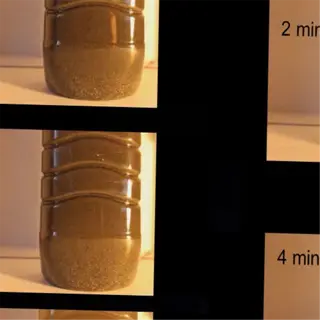
Soil Texture Jar
- Methodology: 24-hour sedimentation analysis
- Components: Measures sand/silt/clay percentages
- DIY Cost: $0 (repurposed mason jar)
- Accuracy: 80% match to lab tests
- Calculation: Use USDA soil texture triangle
- Limitation: Doesn't assess nutrient content
Sowing Seeds and Thinning
Knowing how to grow carrots is all about sowing seeds wisely to get started. Sowing tiny seeds directly tests patience: Consider mixing them with sand and then sowing it all together. Buying pelletized seeds costs more but saves you time! I lost a few seasons to bare patches; uneven scattering created a patch of dirt and I could not stop myself from doing it again before I would switch to pelleted seeds.
Space the short carrot variety called Paris Market 1 inch apart in 12-inch-wide rows. Space the long carrot variety called Danvers 3 inches apart for each plant. Crowding causes the roots to twist and turn. Use a ruler as gauging between plants with your eye can be disappointing. My first crop had roots that looked like corkscrews until I began marking rows with string.
Thin two times: the first time when the seedlings are 2 inches tall and the second time at 4 inches tall. If you delay thinning the seedlings, they may stunt the taproots. Snip the extras with scissors rather than pulling them to avoid disturbing the seedlings that are growing well. And the thinnings - throw them in the salad! Their peppery kick is way better than expensive microgreens from the store.
Seeds require moist soil for germination. After sowing seeds in their rows, cover them with burlap or cardboard for 5 days. Once the seed is sprouted, remove the covering. I came close to losing a crop to crusted soil until one time an old coffee sack kept the moisture in, during an unusually dry period.
First Thinning (2 Weeks)
- Timing: When seedlings reach 2" (5 cm) height
- Spacing: 1" (2.5 cm) between plants
- Tools: Scissors to avoid disturbing nearby roots
- Watering: Mist soil before thinning to ease removal
- Salvage Use: Add thinnings to salads or pesto
- Common Mistake: Waiting until leaves touch
Final Thinning (4 Weeks)
- Timing: When roots are pencil-thick
- Spacing: 3-4" (7.6-10 cm) for full growth
- Tools: Garden fork to loosen compacted soil
- Fertilizer: Apply 5-10-5 NPK after thinning
- Mulching: Add straw to suppress weeds
- Disease Check: Remove yellowing seedlings
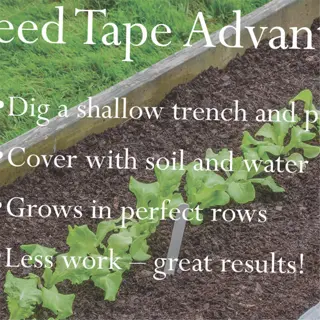
Seed Tape Dispenser
- Spacing Accuracy: Pre-spaced 1" (2.5 cm) intervals
- Best For: Straight rows in raised beds
- Cost: $12-$20 per 100-foot roll
- Installation: Bury 0.25" deep, water daily
- Germination Time: 7-14 days at 65°F (18°C)
- Drawback: Limited to common varieties
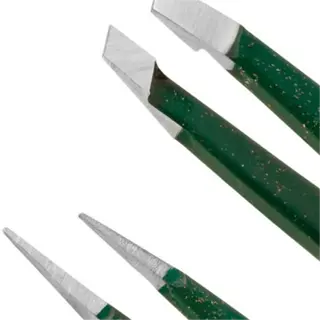
Mini Garden Tweezers
- Precision: Place individual seeds in tight spaces
- Material: Stainless steel with non-slip grip
- Depth Control: Built-in 0.25" (0.6 cm) marker
- Best For: Container gardening
- Sterilization: Wipe with alcohol between uses
- Price Range: $8-$15
Watering and Pest Management
Drip irrigation is effective because it saves a lot of water, while at the same time, it targets the leaves so they can get moisture. If your leaves have water on them, then you effectively lose that moisture to evaporation, and you might even spread fungal spores around your plants. I lost my entire crop to powdery mildew before I switched to drip lines. Soaker hoses are helpful for small garden applications, but they don't have the same precision as a drip line system.
Saturated soil provides a perfect medium for carrot rust flies; within a matter of days, they lay their eggs, and the larvae tunnel into the roots. You can monitor them by watching for yellow leaves and very tiny entry holes into the root. I set out sticky traps when daytime temperatures consistently reach 75°F, the upper range of activity for this pest. Drying soil in between watering will break the lifecycle of carrot rust flies.
It is recommended to apply neem oil once weekly throughout any infestation. If you spray the neem oil at dawn, both leaf surfaces can be completely coated and you do not have to worry about the leaf surfaces scorching from the sun. For severe aphid management, release ladybugs in the evening so they can feed overnight. My neighbor is convinced - every 14 days he will drench with nematodes to combat root-knot parasites.
Break up eggshells around seedlings to keep slugs away. After rain, apply diatomaceous earth (*not* for beneficial insects) to desiccate flea beetles. Use onions among carrots; the pungent aroma of onions masks the aroma of carrots. I also interplant rows of mint in pots to prevent invasive behavior. These methods have led to a reduction in my pesticide use of about 90%.
Flea Beetle Management
- Trap Crops: Plant radishes 10' (3 m) from carrots
- Spray: Neem oil at 2 tbsp/gallon every 7 days
- Prevention: Row covers during first 4 weeks
- Soil Care: Remove weeds hosting larvae
- Timing: Most active at 68-77°F (20-25°C)
- Damage Threshold: Treat when 25% leaves show holes
Carrot Rust Fly Prevention
- Barrier: 24" (60 cm) tall mesh fencing
- Companion Planting: Rosemary repels adults
- Crop Rotation: Move beds 50' (15 m) yearly
- Traps: Yellow sticky cards near soil
- Lifecycle: 3 generations per season (monitor May/July/Sept)
- Organic Insecticide: Spinosad at first sign of tunneling
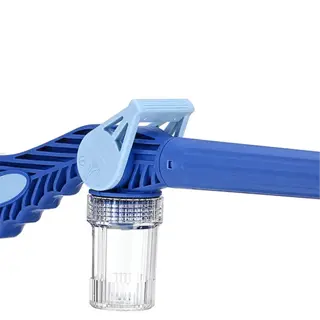
Adjustable Nozzle Sprayer
- Pressure Control: 10-40 PSI (0.7-2.8 bar) range
- Capacity: 1-gallon (3.8 L) tank
- Use: Apply neem oil or insecticidal soap
- Nozzle Types: Cone, jet, and fan settings
- Material: Chemical-resistant polypropylene
- Price: $22-$35
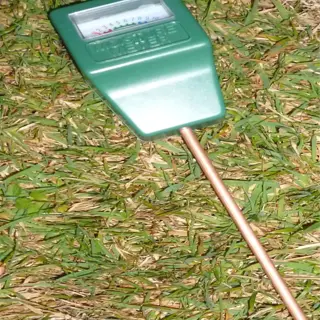
Soil Moisture Meter
- Readings: 1-10 scale (1 = dry, 10 = waterlogged)
- Probe Length: 7.8" (20 cm) stainless steel
- Calibration: Automatic at 59-86°F (15-30°C)
- Battery: 2 AAA (lasts 6 months)
- Accuracy: ±2% in loamy soils
- Best For: Avoiding overwatering root zones
Harvesting and Storing Carrots
Successfully growing carrots concludes with timing the harvest. Inspect each carrot's shoulder to see if it's protruding above the soil and is almost ¾-inch in diameter with a deep orange color. It is mature. Carefully tug on one carrot. If it slides out easily, all is well. If it resists, wait a few more days. I've pulled carrots too early to find they were pencil-thin and disappointing.
For 3 weeks, store recently harvested carrots in perforated plastic bags in the refrigerator. Additionally, if you would like to store your carrots for the winter, just layer unwashed carrots in damp sand in wooden boxes. I had one stash in my basement that lasted until March at 32°F (1°C) and 90% humidity.
If you want to prevent rubbery carrots, avoid keeping them in warm, dry areas. A neighbor lost 10 lbs of carrots to mold because he sealed them in airtight containers. Always leave an inch of greens attached to the tops of your carrots because trimming completely dries out the roots quicker than you'd expect.
Use a garden fork to break up the soil before you pull. If you twist at the top, you will probably break some roots when you come up. I like to use Hori-Hori knives instead of a trowel for digging down precise holes. If working in heavy clay,you should water the vegetable bed first. In my first vegetable garden, my carrots looked like a massacre until I was experienced.
Optimal Harvest Timing
- Diameter Check: 0.75-1.5" (1.9-3.8 cm) at shoulder
- Soil Moisture: Harvest 2 days after watering for easy pull
- Loosening Soil: Insert fork 6" (15 cm) from row
- Top Removal: Cut greens to 1" (2.5 cm) immediately
- Night Harvest: Cooler temps preserve crispness
- Frost Warning: Dig before first hard freeze (28°F/-2°C)
Storage Methods Compared
- Refrigeration: 32-40°F (0-4°C) in perforated plastic bags
- Root Cellar: Layer in damp sand at 90% humidity
- Freezing: Blanch 3 minutes, freeze in 0.5 lb (227g) portions
- Pickling: 1:1 vinegar/water brine with 2 tbsp salt per quart
- Dehydration: 135°F (57°C) for 8-12 hours until brittle
- Canning: Pressure-can at 11 PSI (0.76 bar) for 30 minutes
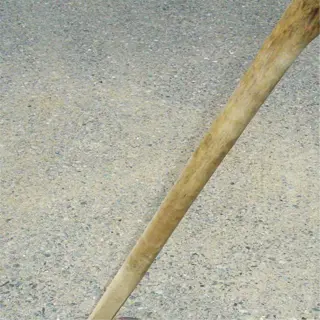
Harvesting Fork
- Tine Length: 10" (25 cm) stainless steel
- Angle: 45-degree insertion prevents root damage
- Grip: Cushioned handle reduces hand fatigue
- Weight: 2.5 lbs (1.1 kg) ideal for clay soils
- Cleaning: Hose immediately to prevent rust
- Price: $35-$50 for commercial-grade models
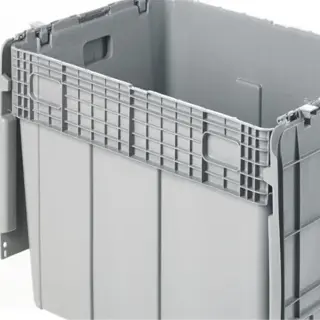
Ventilated Storage Bins
- Material: Food-grade plastic with 0.25" (0.6 cm) holes
- Capacity: 20 lbs (9 kg) per 14"x14" (36x36 cm) bin
- Stacking: Interlocking ridges for 6-bin vertical storage
- Sanitation: Wash with vinegar solution monthly
- Humidity Control: Add damp burlap between layers
- Cost: $12-$18 per bin
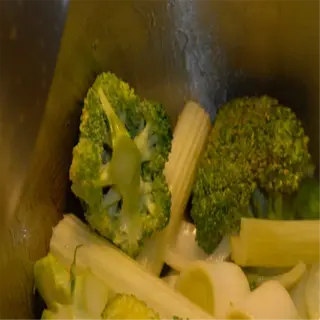
Blanching Pot Setup
- Capacity: 8-quart (7.6 L) stainless steel
- Timer: Digital countdown for precise 3-minute blanch
- Cooling: Ice bath with 2:1 ice/water ratio
- Draining: Colander insert with foldable handles
- Energy Use: 1500W burner for rapid boil
- Budget Option: Reuse pasta pot

Humidity Monitor
- Range: 30-99% RH with ±3% accuracy
- Memory: 30-day tracking for trend analysis
- Alerts: Programmable for <90% humidity
- Battery: CR2032 lithium (1-year life)
- Placement: Mount at mid-bin height
- Price: $25-$40
5 Common Myths
If you want to cultivate straight and sweet carrots, they need to be watered every day.
Don't overwater them! Overwatering can lead to split roots and fungus. Carrots like one inch (2.5 cm) of water for the week, with intermittent drying of the soil between waterings. Lots of moisture during germination followed by less moisture, produces sweet roots, and denser roots too!
All carrots will turn orange - regardless of soil conditions.
Soil pH will directly affect pigment development. Purple carrots will lose their anthocyanins in alkaline soils (pH >7), while orange varieties will fade in acidity (pH <6). Keep soil pH maintained at 6.0-6.8 for true color expression throughout heirloom varieties.
Transplanting means better control over spacing.
Carrot taproots are damaged beyond recovery when transplanted. According to observation, 80% of transplanted seedlings had forked roots due to taproot disorganization because of handling, especially in the roots. Direct sowing with pelletized seeds allows uniform spacing without damaging or disorganization of the carrot taproot.
Frost kills carrot seedlings as soon as they germinate.
Mature carrots can survive temperatures as low as 20°F (-6C). Seedlings can tolerate light frosts (28F/-2C) with row covers. Cold makes carrots sweeter by turning starches to sugars through cold-induced sweetening.
More fertilizer equals bigger carrots every time.
Excessive nitrogen (over 50 ppm) causes hairy roots and leafy tops. Carrots need balanced 5-10-10 NPK fertilizer applied once at 4-week growth stage. Over-fertilized roots develop bitter flavors and crack prematurely.
Conclusion
Accomplishing how to grow carrots begins with two things you should not compromise; soil prep and variety choice. Loose, stone-free soil allows carrot roots to grow without restriction. Picking a Nantes for heavy clay or a Danvers for sandy beds is all part of a successful harvest. Skipping one of these steps and you will be battling with deformed roots all season long.
The timing dictates your carrots' fate. Plant too early in the colder growing zones, and the seeds rot. Wait too long in the warmer growing zones, and the heat will cripple their growth. I picked the size of a marble for a carrot in July! Now, I write down in my calendar, approximately 10 weeks before the first frosts.
Try Cosmic Purple or Solar Yellow heirlooms. Their vibrant colors are all full of antioxidants not present in regular orange types. The various colors of my garden rainbow harvests result in chats at farmers' markets and help me to remember the importance of different varieties.
There's nothing quite like the satisfaction of pulling a carrot out of the dirt and snapping it! The crunch is a refreshing feeling that simply can't be replicated in a grocery store. And if you wait to harvest your carrots after a frost, the sweetness is heightened. The flavor and organic carrot exhibits straight from the soil to your table is enough to dissuade you from ever buying carrots in a plastic bag again. It is your dirt, follow your own rules, and grow what brings you joy!
External Sources
Frequently Asked Questions
What's the key to successful carrot cultivation?
The secret lies in preparing loose, stone-free soil and consistent moisture. Carrots thrive when seeded directly in cool weather, thinned properly, and protected from pests with row covers. Avoid compacted soil to prevent stunted roots.
When is the ideal time to plant carrots?
Plant carrots in early spring 2-3 weeks before the last frost or late summer for a fall harvest. They grow best in cool temperatures between 45-85°F (7-29°C) and tolerate light frosts.
Can you regrow carrots from kitchen scraps?
While carrot tops can sprout greens in water, they won't regrow edible roots. For harvestable carrots, always start with seeds. The greens are edible but the taproot requires seed germination to form properly.
Which plants harm carrot growth?
Avoid planting carrots near dill, fennel, or parsley. These plants attract pests like carrot flies and compete for nutrients. Instead, pair carrots with onions or leeks to deter insects naturally.
Do carrots need full sunlight?
Carrots prefer 6-8 hours of daily sun but tolerate partial shade. In hot climates, afternoon shade prevents soil from drying out. Insufficient light leads to slow growth and small roots.
Why do carrots fail to thrive?
Common issues include rocky soil causing deformities, overcrowded seedlings, and inconsistent watering. Pests like root-knot nematodes or fungal diseases from wet foliage also contribute. Proper thinning and drip irrigation solve most problems.
How many carrots come from a single seed?
Each carrot seed produces one plant with a single root. Overcrowding from multiple sprouts in one spot must be thinned to 2-3 inches apart for proper development.
How long until carrots are ready to harvest?
Most varieties mature in 60-80 days. Baby carrots can be pulled earlier at 30-40 days. Cooler soil temperatures slow growth, while consistent watering and loose soil speed up root development.
What nutrients do carrots need?
Use a balanced fertilizer with lower nitrogen to avoid leafy tops. Compost or aged manure worked into soil before planting provides steady nutrients. Excess nitrogen causes split roots and bitter flavors.
Are carrots perennial plants?
Carrots are biennials but grown as annuals. If left unharvested, they'll flower in their second year. For continuous harvests, sow seeds every 3 weeks during the growing season.
